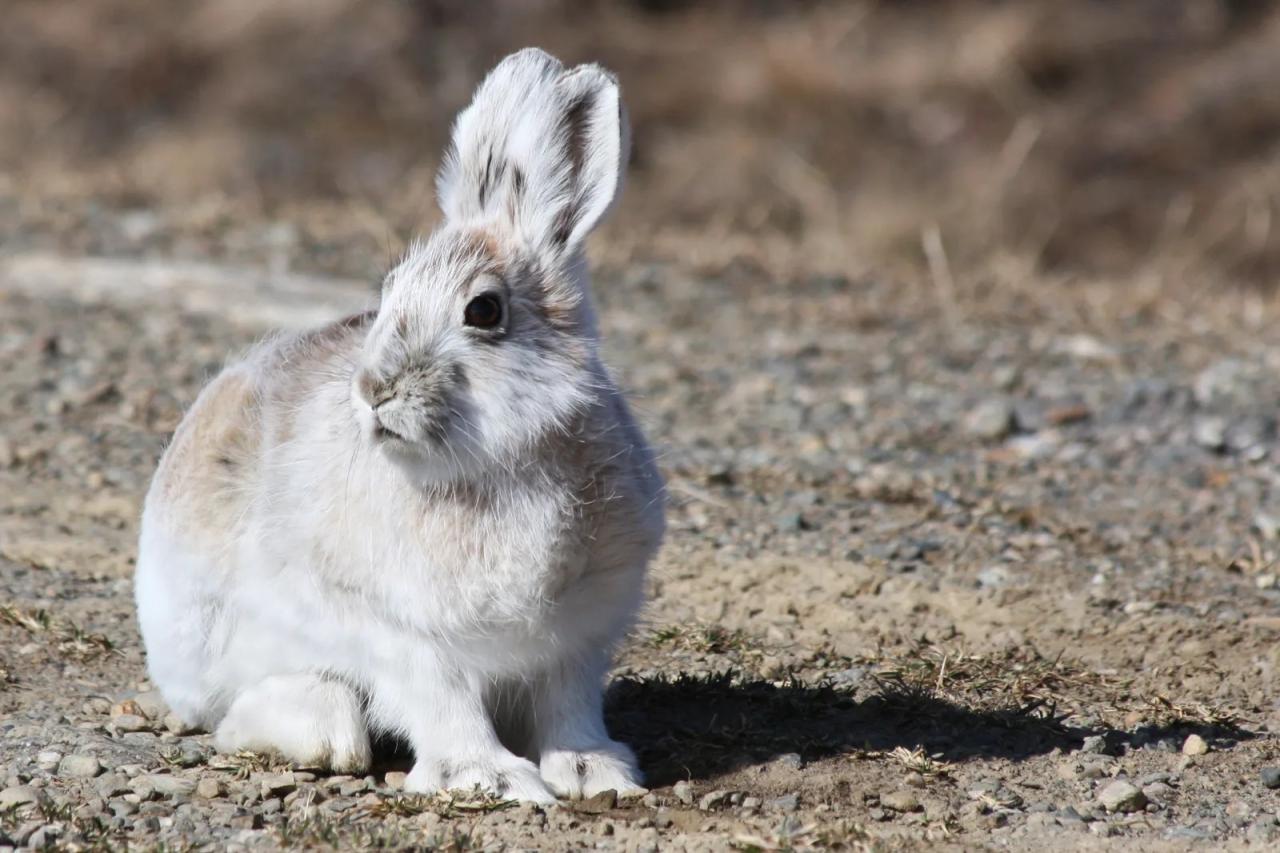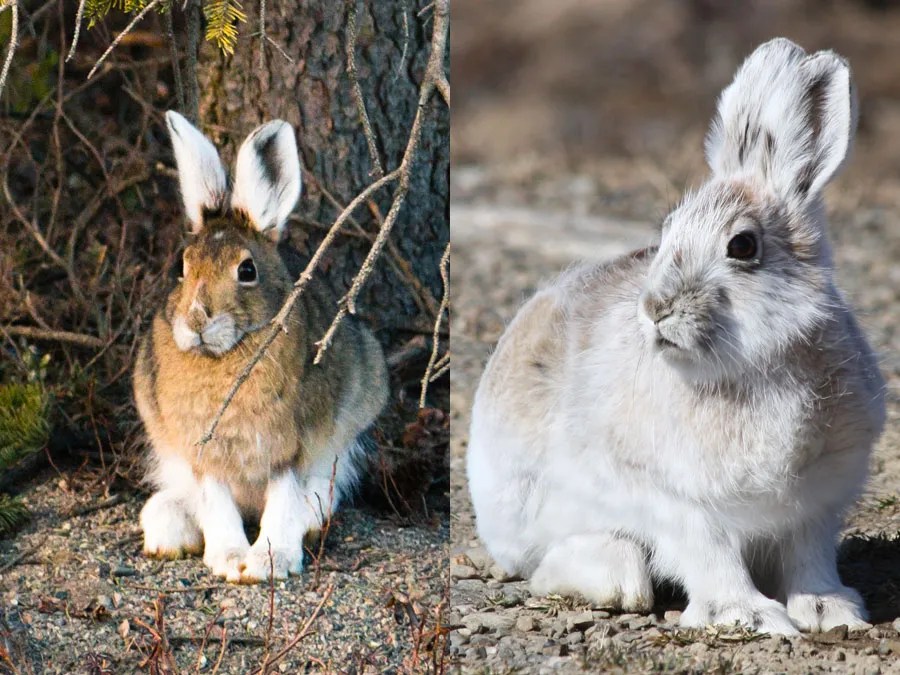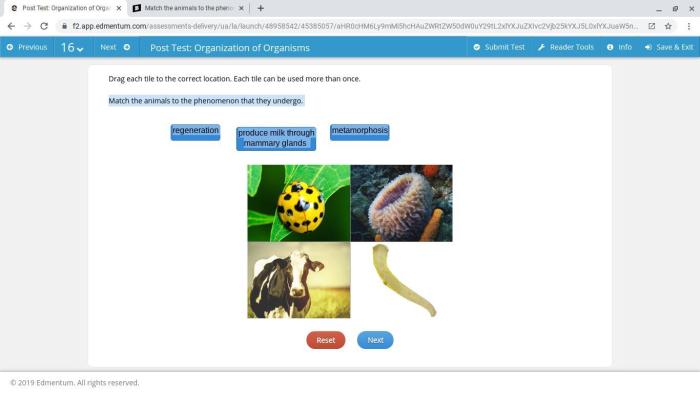Embarking on a journey to unravel the fascinating world of match the animals to the phenomenon that they undergo, this comprehensive guide invites readers to explore the extraordinary adaptations and behaviors exhibited by animals in response to their environments. Delving into the depths of hibernation, migration, estivation, torpor, diapause, polymorphism, and mimicry, we uncover the intricate strategies animals employ to survive and thrive in a diverse and ever-changing world.
Hibernation

Hibernation is a state of dormancy in which animals enter to survive extreme weather conditions, primarily cold and lack of food. During hibernation, animals reduce their body temperature, heart rate, and metabolic rate significantly.
Animals that hibernate include bears, bats, and groundhogs. These animals typically enter hibernation in the fall and emerge in the spring when the weather conditions improve.
Physiological changes that occur in animals during hibernation include:
- Decreased body temperature
- Slowed heart rate
- Reduced metabolic rate
- Increased fat reserves
Migration
Migration is the movement of animals from one location to another, typically over long distances. Animals migrate for various reasons, including food, breeding, and to avoid harsh environmental conditions.
There are two main types of migration:
- Seasonal migration: Animals migrate between their breeding and non-breeding grounds, typically driven by changes in temperature or food availability.
- Altitudinal migration: Animals move between different altitudes, typically to find more favorable conditions for food or breeding.
Examples of animals that migrate include birds, whales, and wildebeest.
Estivation

Estivation is a state of dormancy in which animals enter to survive extreme heat and drought conditions. Estivation is similar to hibernation, but it occurs during hot and dry periods, rather than cold and snowy periods.
Animals that estivate include snails, lungfish, and desert tortoises. These animals typically estivate in burrows or other cool, moist places.
Adaptations that allow animals to survive in extreme heat and drought conditions during estivation include:
- Reduced metabolic rate
- Increased water retention
- Behavioral adaptations, such as seeking shelter in cool, moist places
Torpor
Torpor is a state of reduced metabolic activity that animals enter to conserve energy. Torpor can occur daily or seasonally.
Daily torpor is a short-term reduction in metabolic activity that occurs each day, typically at night or during periods of rest. Seasonal torpor is a long-term reduction in metabolic activity that occurs during periods of food scarcity or extreme weather conditions.
Examples of animals that enter torpor include hummingbirds, bats, and squirrels.
Diapause: Match The Animals To The Phenomenon That They Undergo

Diapause is a state of suspended development that animals enter to survive unfavorable environmental conditions. Diapause can occur at different stages of an animal’s life cycle, including embryonic, larval, and adult stages.
Different types of diapause include:
- Embryonic diapause: Development of the embryo is paused.
- Larval diapause: Development of the larva is paused.
- Adult diapause: Development of the adult is paused.
Examples of animals that undergo diapause include insects, amphibians, and reptiles.
Polymorphism
Polymorphism is the ability of an animal to exist in different forms or morphs. Polymorphism can be caused by genetic or environmental factors.
Different types of polymorphism include:
- Seasonal polymorphism: Animals change their appearance or behavior depending on the season.
- Sexual polymorphism: Males and females of the same species have different appearances or behaviors.
Examples of animals that exhibit polymorphism include arctic foxes, butterflies, and some species of fish.
Mimicry
Mimicry is a form of deception that animals use to avoid predators or attract prey. Mimicry can involve the animal’s appearance, behavior, or both.
Different types of mimicry include:
- Batesian mimicry: A harmless animal mimics a harmful or dangerous animal to avoid predators.
- Müllerian mimicry: Two or more harmful or dangerous animals mimic each other to warn predators.
Examples of animals that use mimicry include stick insects, butterflies, and fireflies.
Clarifying Questions
What is the difference between hibernation and estivation?
Hibernation is a state of dormancy in which animals enter a deep sleep to conserve energy during cold weather, while estivation is a similar state of dormancy entered by animals to survive extreme heat and drought.
What are the different types of migration?
There are two main types of migration: seasonal migration, in which animals move between different habitats to find food or breeding grounds, and altitudinal migration, in which animals move between different altitudes to find more favorable conditions.
What is the purpose of mimicry?
Mimicry is a form of deception in which animals evolve to resemble other animals or objects to avoid predators or attract prey.